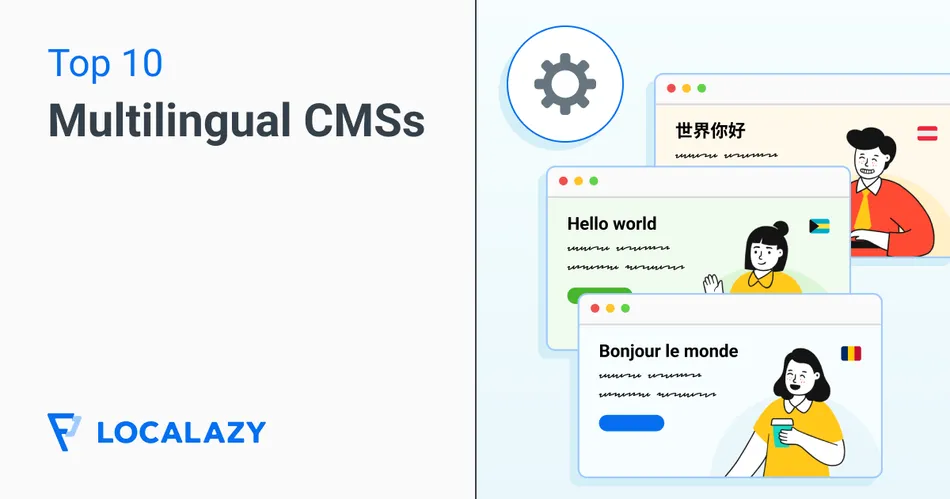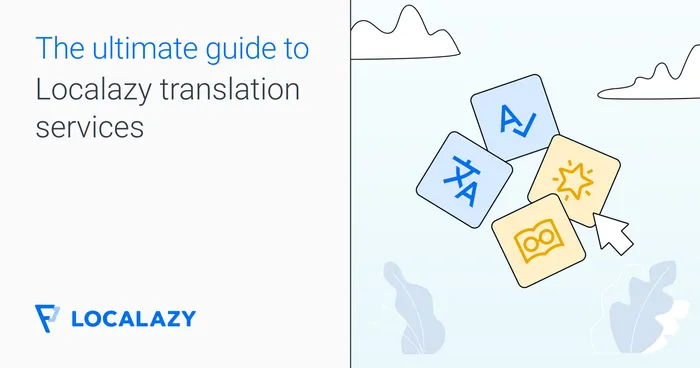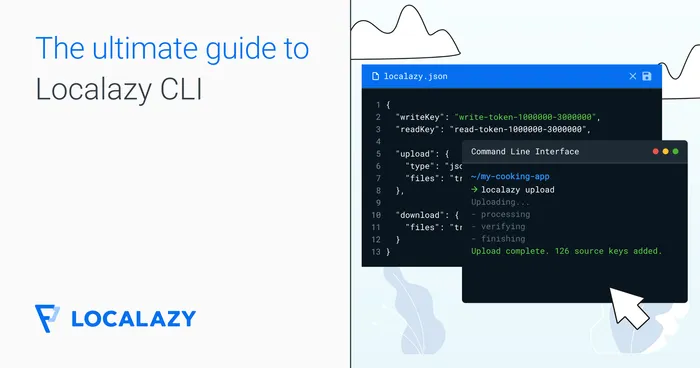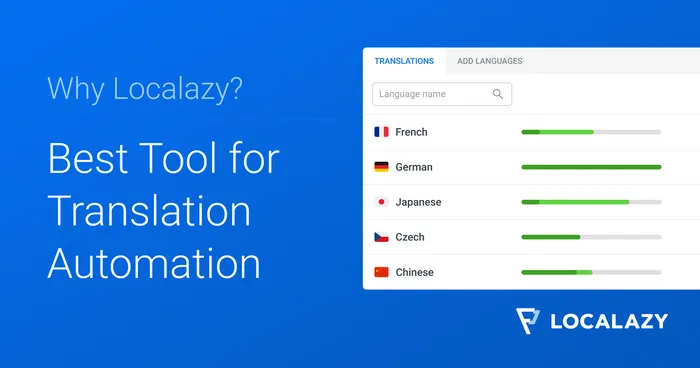Businesses are struggling to serve multicultural customers in the globalized online environment. They are realizing the necessity of language-specific marketing and online presence to reach their target audience. According to a CSA Research survey:
- ❌ 60% of buyers rarely or never buy from English-only websites.
- 💬 Additionally, 72.4% prefer to buy from a site with information in their language.
This makes multilingual websites a must-have tool for success, and Content Management Systems (CMSs) play a major role here. As web development evolves, CMSs have adapted to support different languages. Multilingual CMSs grow your audience, boost engagement, and increase conversions. However, too many alternatives make the choice difficult.
On this piece we'll discuss the top 10 multilingual CMSs and lay out their top features so you choose the right one for your business. We'll compare CMS translation management, language support, and user interfaces. Whether you're a web developer, a marketer, or a business owner, there's something else out there for you.
❓ What exactly is a CMS? 🔗
Simply put, a Content Management System is a software package that allows users to edit, update, and publish web pages without the need to alter the code. CMSs are usually installed on a web server, and they can be both self-hosted or cloud-based.
The CMS will have any number of features depending on the site's purpose. The most common features are user account management, page editing, file upload, page publishing, and search engine optimization.
The advantages of using a CMS include:
- 🔒 an increase in site security,
- ⌛ less time spent on making changes to the site,
- 💰 and lower maintenance costs for existing sites.
Specialized content management systems are also used in e-commerce to create a website focusing on selling products. On top of the usual features, the e-commerce-ready CMS allows you to manage the products, payment methods, and even inventory and invoicing. They also offer an expansive array of modules, including a shopping cart, payment gateways, customer relationship systems, and more.
🤨 Things to consider 🔗
If you're dealing with a global audience, you might be confused at a point about which content management system to use. To help you choose the best CMS for your multilingual needs, here are a few considerations.
Handling different languages effectively 🔗
A multilingual CMS should help you manage your content effectively in different languages. If you're operating your website from Canada in the English language and your audience is also from France or the Quebec region, your CMS must have the capacity to support all aspects of French, such as character set, locale variations, or formatting.
Maintaining global website structure 🔗
One of the most common challenges with global sites is ensuring that navigation and content are consistent across different languages and formats. Your CMS must provide an architecture that helps you maintain user experience for different people in different parts of the world with varying languages. Each version of your website should be managed independently, e.g., to hide pages available only in one language, and translating them wouldn't make sense.
Flexibility for different locales 🔗
When choosing a CMS and creating your website, it's best to think about your expansion plans and the supported locales. You could end up surprised when the direction of language is changed from LTR to RTL, and it suddenly doesn't work. Your CMS should be able to handle the bidirectional issue as well. ⚓
The date and time formats in different regions are diverse and should be smoothly adapted to your website. Many CMSs lack this feature even though they support multilingual content management. You need to be sure of this before making a choice.
API Integration 🔗
Sometimes people prefer to use a Translation Management System (TMS) when dealing with plenty of content. A TMS provides the capability to manage all aspects of the translation process. It helps to translate texts into new languages and maintain translations already in use.
Many translation management platforms provide a solution that allows users to upload their content, which can be translated by translators and then downloaded back. With Localazy, you can connect your project via one of the 50+ integrations and automate the process entirely. You can also order translation services directly and get your content translated continuously.
The CMS should be built so that it aids in the seamless integration of the TMS's API. Only a CMS developed with such aspects in mind will allow for the efficient pushing and pulling of information via translation API.
🔌 Integrate your CMS with the Localazy API and forget about the localization hassle forever!
SEO 🔗
Search engine optimization is a challenging job, and it becomes even more problematic when it comes to international SEO. This is something that the CMS should be able to assist with. 🔎 If the CMS has a built-in functionality for international SEO, you can do everything from adopting SEO-friendly URL structures to quickly optimizing metadata and language tags.
📋 The list of top 10 multilingual CMS 🔗
1. Storyblok 🔗
If you want a flexible CMS that big brands already trust, Storyblok is worth a look. It’s an enterprise-level headless CMS used by over 200,000 developers and marketers; names like Adidas, Tesla, and Oatly use it to keep huge content pipelines running smoothly. Storyblok comes with ready-made templates, custom modules, reusable components, and video support to help teams build and manage sites faster.
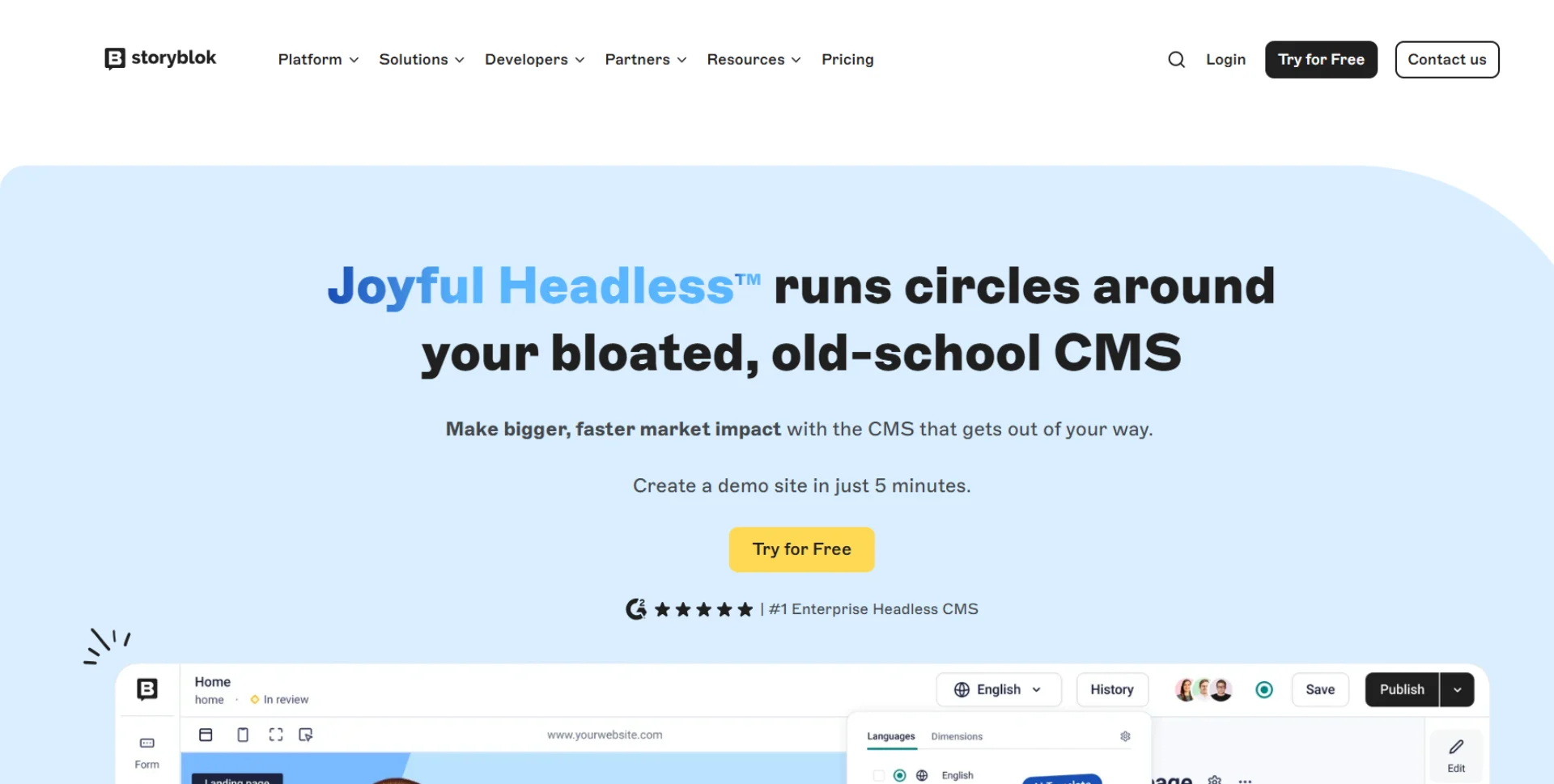
One thing people really like about Storyblok is how easy it is to use, even if you don’t write code. Its real-time visual editor lets you see changes as you make them, so you’re not stuck guessing how things will look live. In fact, it is the only headless CMS that features a real-time visual editor (if you're unaware of what headless architecture is, check out this article).
Storyblok allows you to handle multilingual content and integrates with a variety of translation management platforms, Localazy included. These integrations let you make your content available to a global audience.
The best part is that Storyblok offers two options for managing multi-language content. This is done to cope with different approaches to translation:
- For example, field-level translation is an excellent option if the structure of your material in a foreign language is the same as it is in your default language.
- Similarly, folder-level translation is recommended when different teams control content for multiple languages, or your project is structured differently for each market.
🎙️ Alex Kopp (Senior Solutions Engineer at Storyblok) explains how these two types of approaches work in our podcast (from 16:35 on)
2. Strapi 🔗
Strapi is a favorite for developers who want the freedom to build sites and apps their own way without being boxed in by an old-school CMS. It’s open-source, runs on Node.js, and works well with GraphQL and React, so it fits nicely with any modern stack.
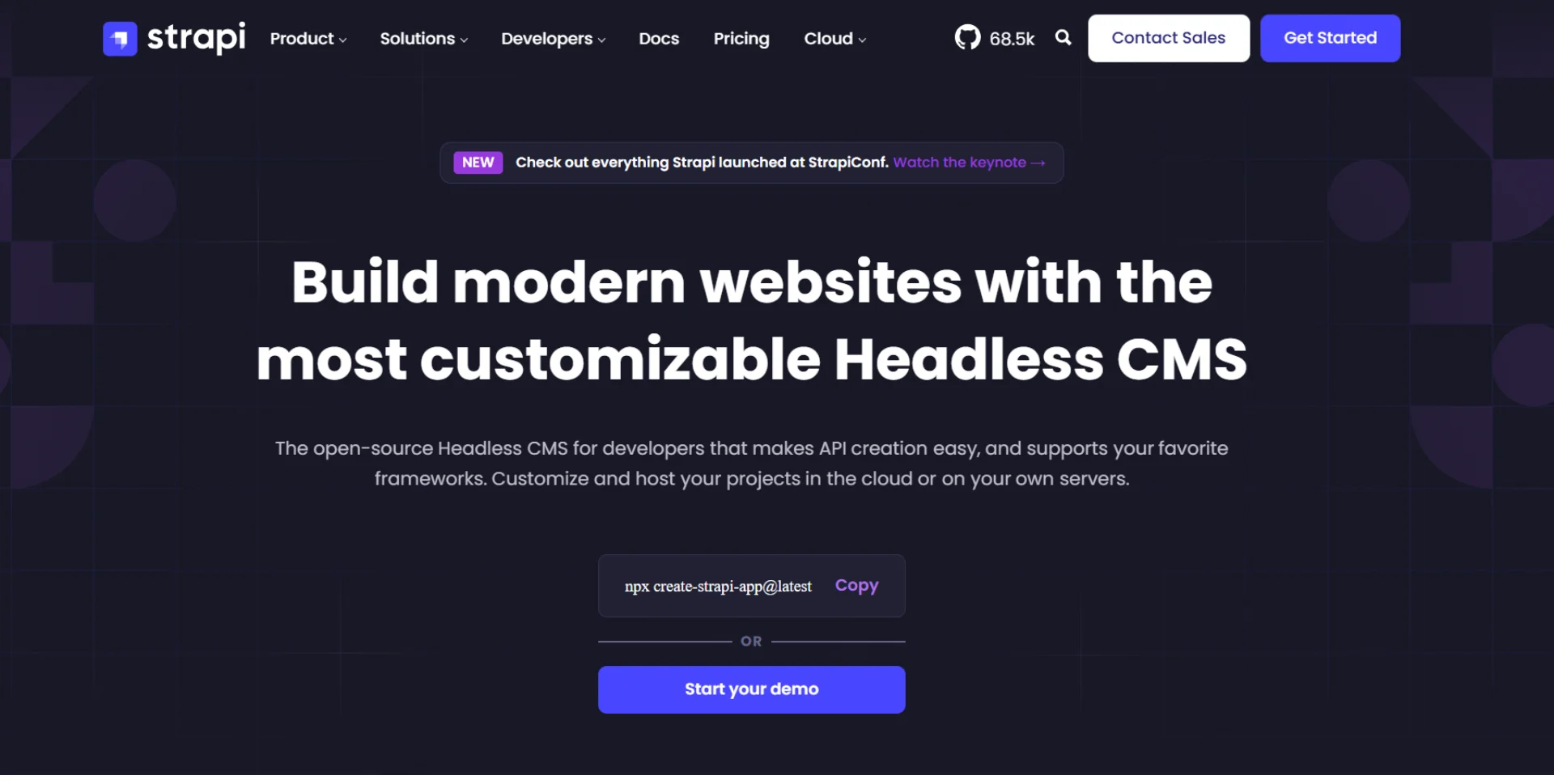
One thing people appreciate about Strapi is how it handles content for different languages. If you’re reaching an international audience, you don’t need clunky workarounds. Strapi’s localization lets you pull content for different locales through its API, create new entries, and reuse parts of your existing content to speed things up. You can also decide who can work on each language, so your team stays organized and secure.
3. WordPress 🔗
WordPress is the most popular content management system on the internet. It is used by millions of websites, including some of the largest media outlets in the world. With thousands of plugins and themes available, as well as an active community of third party developers, the possibilities are endless for what you can do with this CMS.
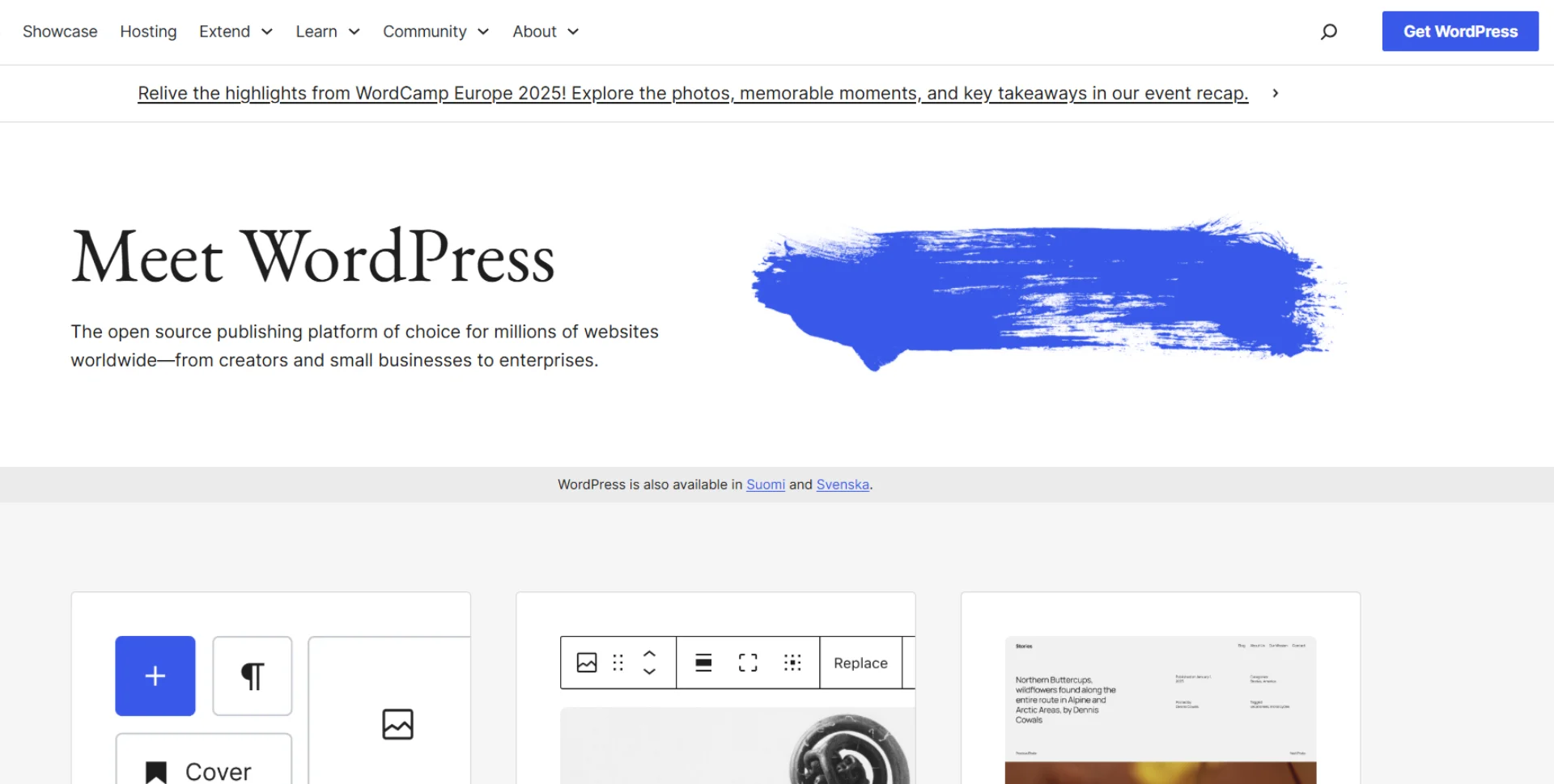
You might be confused to find out that when searching for WordPress, you'll find two officially-looking websites. One is WordPress.org, where you can download the latest release and install it on your server, and the other is a hosting service on a .com website. Both achieve a similar result for the end user, and the latter is actually founded by the co-founder of WordPress.org - which is also why both websites use almost the same logo and no lawsuits are in process. 🙂 You can read more about the differences on the WPBeginner Blog.
If you chose this CMS, the WordPress Multilingual Plugin (WPML) is a powerful plugin that can help you translate your website's content into any language. This plugin makes it easy for you to create a multilingual website to reach out to international clientele. All you need to do is install the plugin and key in the languages you want on your site. With this plugin, you can also translate blog posts, menus, pages, text widgets, and many more features.
.po files. Read more about the PO/POT formats here.4. Directus 🔗
If you like keeping your data under control without being locked into one cloud or setup, Directus might be your kind of CMS. It’s an open-source data platform that sits on top of your existing SQL database, giving you full freedom over how you store and shape your content. With Directus, developers can spin up custom RESTful or GraphQL APIs, use the JavaScript SDK, and tweak everything thanks to its modular design. It also brings in handy tools like a live preview, file library, detailed access control, and CLI commands, so managing and scaling data is less of a headache and more about building what you need.
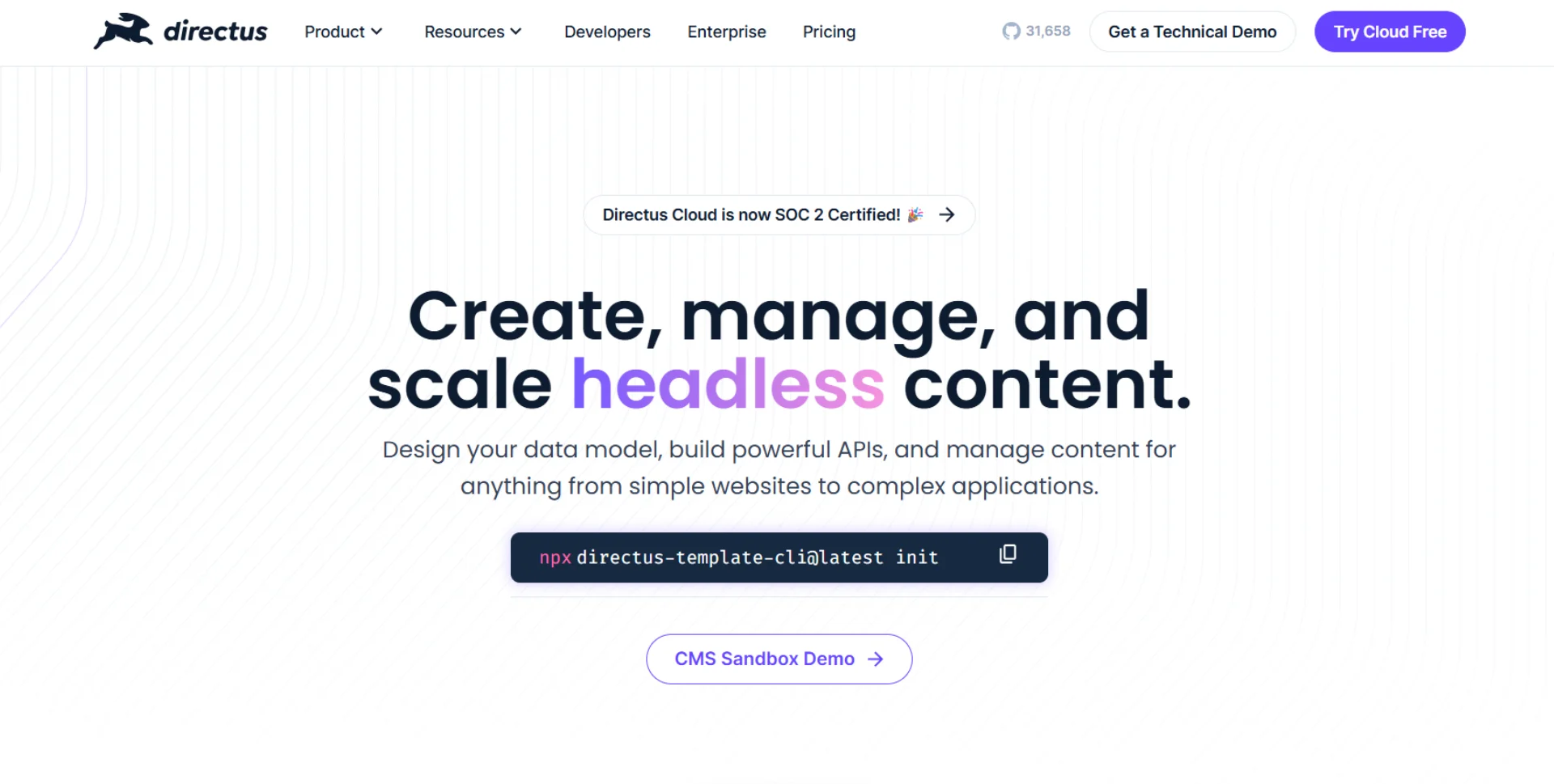
However, with all these features come a few limitations, such as a lack of options for push-pull control of the database for offline usage, login issues with cache enablement, and a lack of auto-installation function for some features like Nginx or Caddy.
Directus also offers a functionality for content localization. Setting up multilingual content in Directus is straightforward. You can introduce multiple languages, identify fields that require adaptation, export textual content for translation, and input translations into your Directus project.
5. Webflow 🔗
If you want full control over how your site looks without wrestling with code, Webflow is worth a closer look. It gives designers, freelancers, and startups the freedom to build unique sites without hiring a whole dev team. You can design from scratch or pick a template, adjust every detail with a drag-and-drop editor, and see changes live as you work. The built-in CMS makes it easy to handle blogs, portfolios, or landing pages with lots of content. Hosting is included too, so you don’t have to juggle extra tools; everything stays in one place, ready to publish when you are.

Webflow makes managing sites in more than one language possible through third-party integrations like Localazy. You can connect Localazy to Webflow to handle all your translations, keep your content in sync, and get updates pushed automatically. It saves time and keeps your site ready for visitors in different languages without much fuss. You can also keep your multilingual SEO in shape by setting language tags and alternate URLs for translated pages.
6. Django CMS 🔗
If you’re looking for an open-source content management system that provides a comprehensive framework for developing web applications, Django CMS can be your go-to tool for that. Apart from its convenient interface, this Python-based CMS offers powerful features like role-based access control, in-line editing, previewing changes in real-time, and more; and can be integrated with multiple platforms.

Django supports the internationalization and localization of websites, which means that you can use it to build multilingual websites. It's designed to be language-agnostic, so it doesn't impose any restrictions on the website's content but instead provides a level playing field for different languages. The system also makes it easier for visitors to switch between languages on the fly.
7. Ghost 🔗
The Ghost CMS is a WordPress alternative that offers the flexibility of an open-source system but without all the bells and whistles of WP. This CMS was born out of a need for a simpler alternative to the complexities of other available blogging platforms. Since then, it has gained recognition for its minimalistic interface and user-friendly design, prioritizing readability and overall user experience. It's built on JavaScript, with a markdown-driven content system and auto-deployment scripts, and includes built-in SEO features like structured data and metadata, canonical tags, XML sitemaps, and Google AMP support.
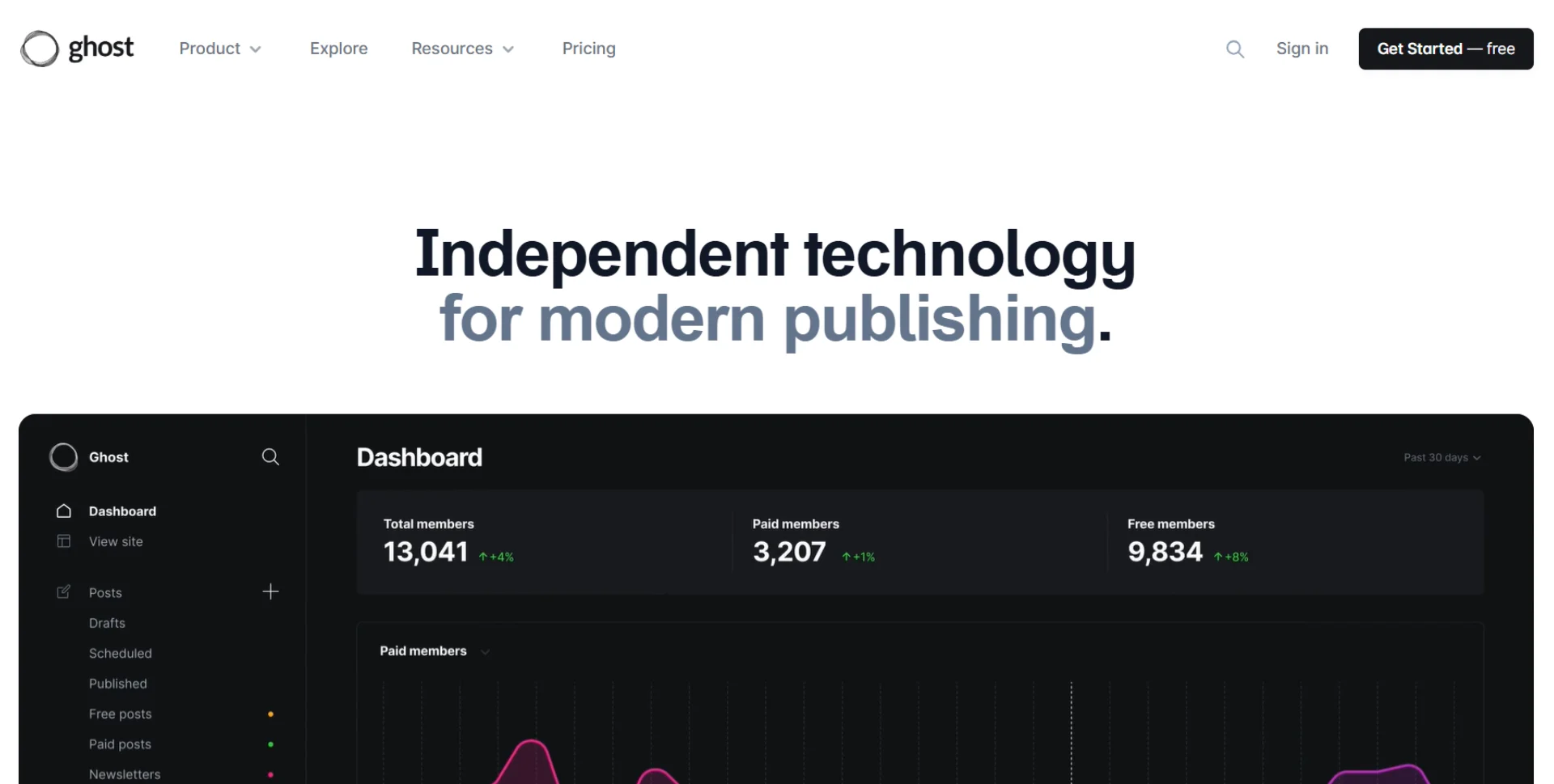
Ghost supports multilingual content management via template development, but keep in mind that some of its themes need a lot of work to be translated into multiple languages. It's better to select a translation-friendly theme.
You can also make your translated content SEO-friendly using the rel= "alternate" link element to the head. When a search engine crawler crawls your site, it will know which translation to display whenever somebody searching for your site in a specific language does so.
😁 Fun fact: We practice what we preach! We use Ghost for our blog due to its simplicity, flexibility, accessibility, and scalability. You can integrate Ghost through Zapier with Localazy as well
8. Contentful 🔗
As a headless CMS, Contentful offers only the backend for its users. Then, it allows them to streamline content into multiple channels using their preferred API or other integrations. The platform might prove tricky for non-engineers, but developers can comfortably use it. 👨💻 Since it’s open-source, Contentful handles the power of customization to devs, and unifies the infrastructure and administration of all features in one space. Similar to Localazy, the platform uses the REST API combined with a global CDN to deliver content.
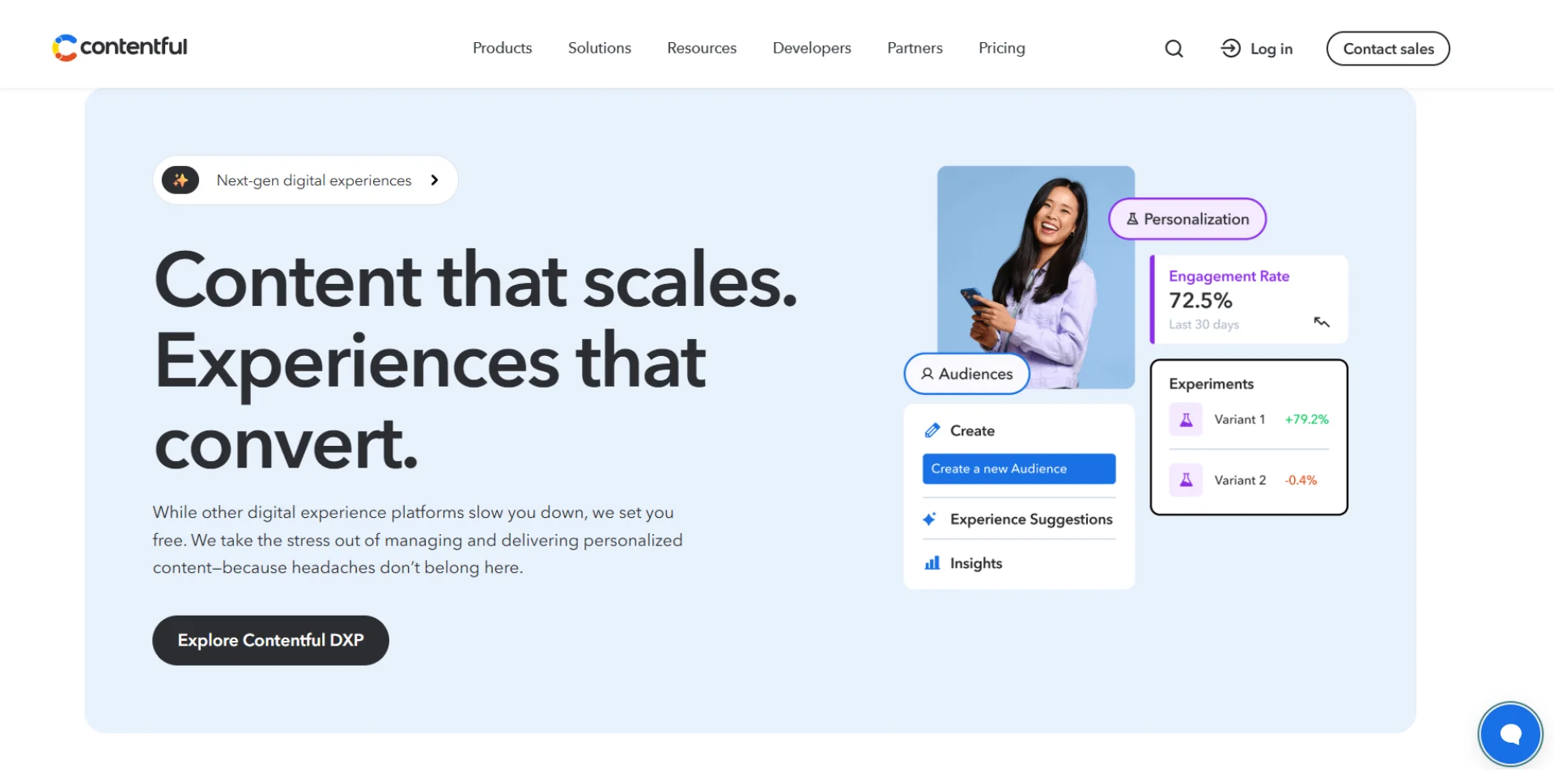
The platform provides a framework to process and manage multilingual content faster but it’s up to you to provide it with top-notch localized content. This is when it’s best to hire a team. 😉
9. Drupal 🔗
Drupal is a free, open-source content management system used to power millions of websites and applications. It also provides a platform for building highly interactive web applications that can be customized to suit the needs of any customer. Drupal was first released as an open-source project in 2001 and has been downloaded from the Drupal website millions of times. It is used by thousands of top websites around the globe.

Drupal is among the top CMSs that support multiple languages when it comes to multilingual content. When you install it, the first thing you have to choose is the base language (the installer selects this based on your browser's language). You can then enable language modules from the admin panel. Detailed documentation is provided on Drupal's website for each module, from enabling a different language to translating it.
10. Shopify 🔗
Shopify is widely recognized as one of the most prominent eCommerce systems. Businesses expand and succeed online with its features, tools, apps, and extensions. Though mostly known for eCommerce, it also functions as a CMS with a user-friendly interface that enables easy content creation and editing, a configurable layout using a theme editor, and built-in SEO tools to optimize metadata.
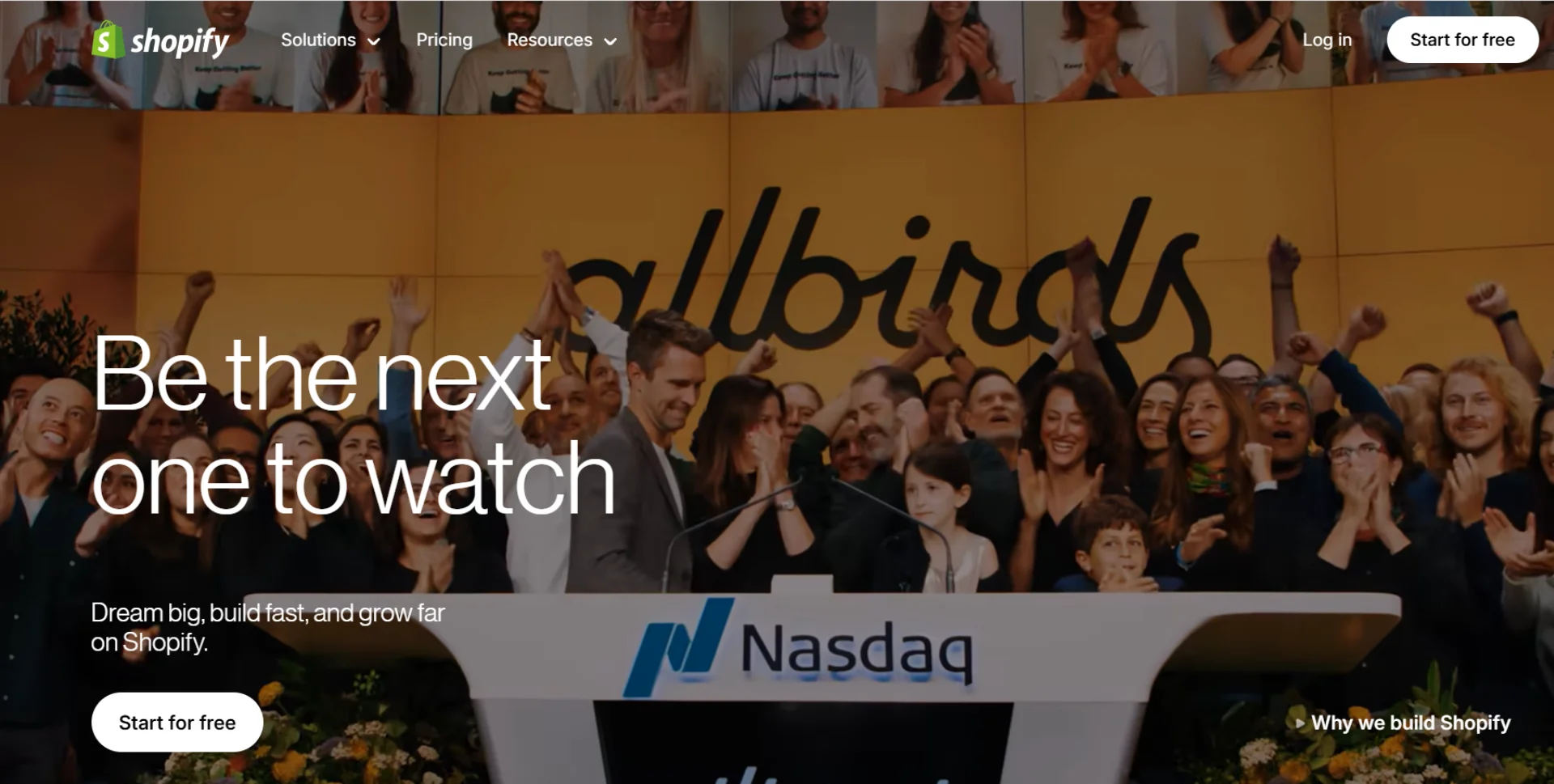
There are restrictions, though: there is less flexibility, URL structure control, and third-party app integration than with other CMSs. But it's the ideal choice for content development and eCommerce from a single platform, so it's perfect for businesses who are looking to manage both functionalities in one CMS.
Shopify's internationalization support lets merchants reach a global audience and grow their business. You can sell in up to 20 languages from a single store, making the process easier. As with Ghost, if you use Shopify to create a multilingual website, make sure to select a theme that supports localization options.
😊 Bonus: 8 more CMSs 🔗
The list of CMSs available out there is never-ending, so here are eight additional suggestions for you with less popularity but great performance.
11. ProcessWire 🔗
ProcessWire is a free, open-source, lightweight content management system that's powerful enough to be used for both small and large client websites. It has a simple yet powerful templating system that allows for rapid development of pages, templates, modules, or anything else created from a CMS. It has many features you'd expect from much pricier systems, like frontpage extensions and databases.

This CMS supports multilingual website management with a variety of features that you can control directy from the admin panel, including flexible translation modules that make localization easy.
12. SilverStripe 🔗
SilverStripe is a robust, open-source system that can be installed on your server. It provides everything you need to create a professional, well-designed website: an admin console for managing content and users, templates with great design to suit any industry, powerful templating languages, and the ability to integrate with other technologies.

Silverstripe uses a i18n class to display templates and PHP code in different languages. Whenever you need to play with multilingual content, you can call i18n. It will listen to you! You can set up the CMS in various languages, and the system will automatically convert the content on the fly.
13. October 🔗
October is an open-source and free content management system built mainly on Laravel and PHP. By using PHP, it provides a dynamic experience instead of a static one. The CMS was released in May 2014 (surprisingly not October), offering backend support for SQLite, PostgreSQL, and MySQL, while the front end relies on a flat-file database.
The self-hosted platform simplifies the creation of websites and claims to offer advanced security. Users can easily edit the placement of visuals, the layout, manage forums, and track analytics about visitors. Moreover, the platform offers a myriad of i18n plugins to allow developers to manage their translated content.
14. Optimizely 🔗
Optimizely is yet another excellent content management system built and developed to allow anyone, whether they are marketers, developers, or ordinary consumers, to easily optimize, create, and manage digital experiences. Its integrated Digital Asset Management (DAM) feature makes it simple to reuse content, and its scheduling and versioning capabilities guarantee constant content updates.
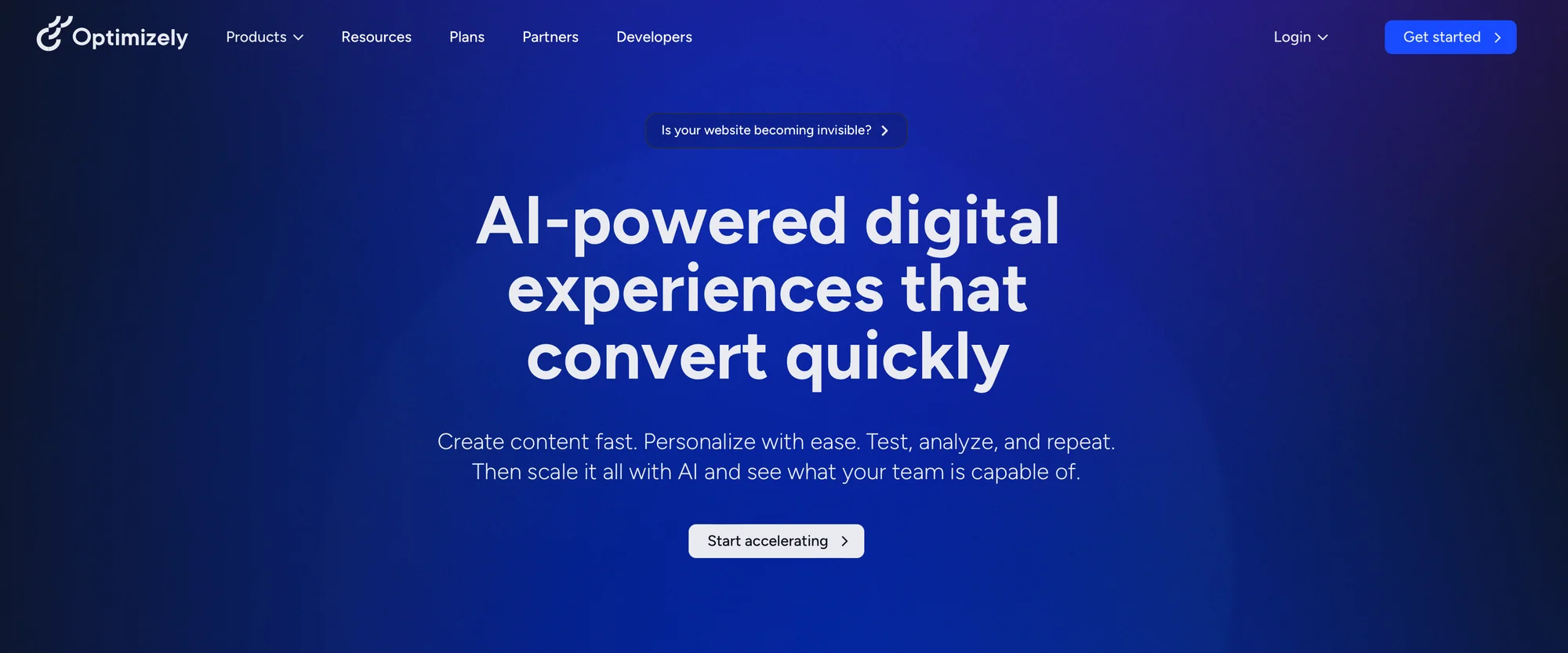
Regarding multilingual content management, the platform offers strong support, letting users switch languages for the editorial user interface and detecting language preferences through browser settings. It also offers multilingual support for customized commerce.
15. DatoCMS 🔗
DatoCMS is a headless option that lets developers create bespoke content structures with customizable modeling features. This CMS separates content management and delivery, allowing developers to use their preferred front-end tools and technologies and content editors to easily manage and publish across channels through their GraphQL API. Dato ensures availability and performance with data encryption, regular backups, and a distributed architecture.

Their interface is offered in several languages, including English, Spanish, German, French, Italian, Dutch, Russian, and Turkish. Users can choose from more than 400 locales to publish in to serve global audiences. Assets like rich text, responsive graphics, geo-points, SEO metadata, and even URLs are localizable with it.
16. Agility 🔗
With user-friendly features like traditional website management tools and an API-First approach, Agility is a game-changing CMS that stands out for its collaboration features. It gives developers the ability to provide unique module definitions and page templates, which are subsequently made available to marketers so they may construct a wide variety of pages that satisfy changing consumer wants and market conditions. This type of architecture makes tedious developer tasks easy and optimizes resource allocation.
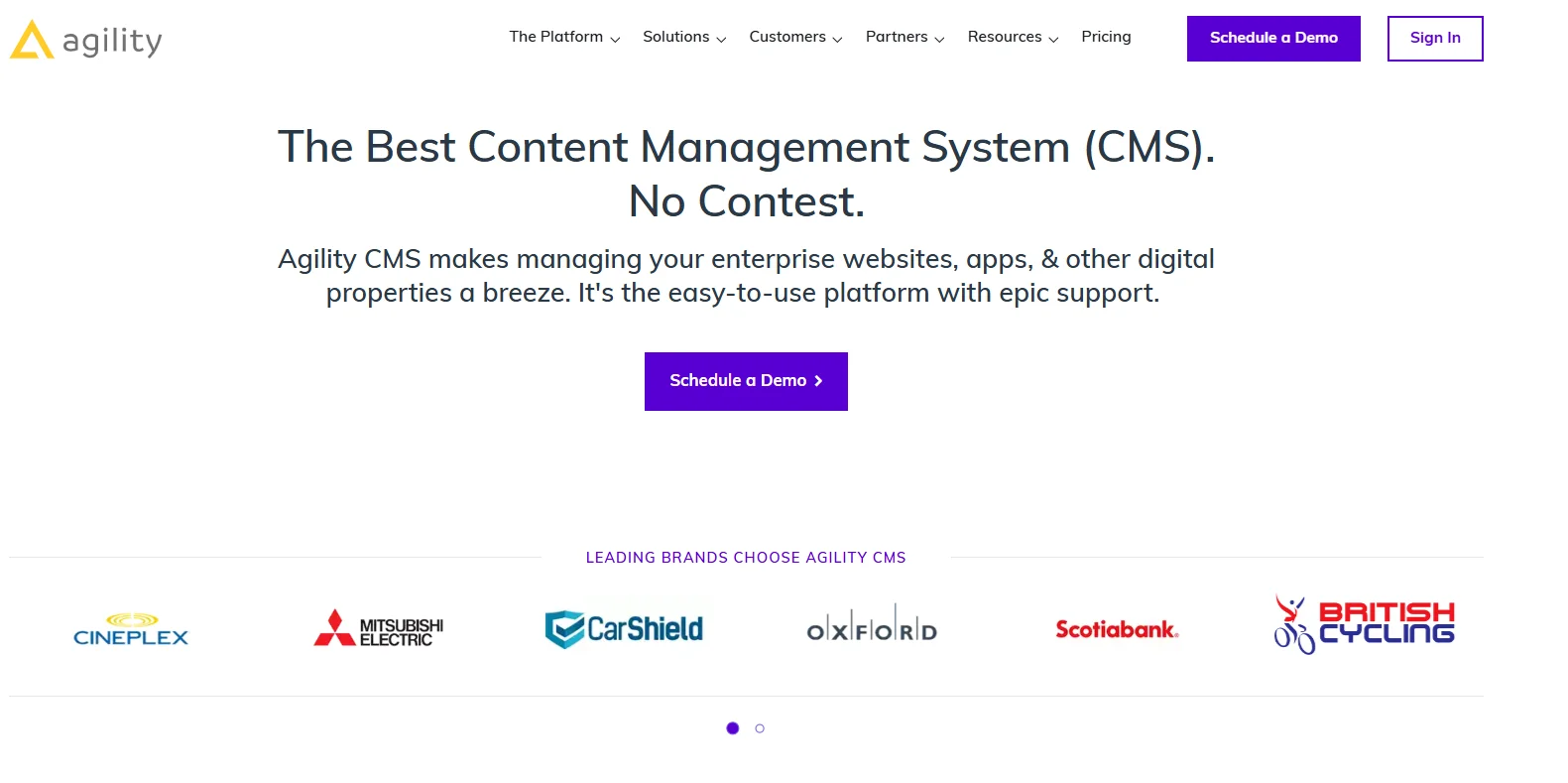
This CMS offers a great multilingual experience, allowing users to manage multiple languages and locales.
💡Did you know that you can integrate Agility with Localazy using Zapier? With Zapier actions and triggers, you can automate tasks such as importing content, publishing projects, and bundling files into zip files. For instance, when a comment is added to a project, Localazy can trigger an instant content import. Similarly, when a project is published, Localazy can import source and other language keys
17. Hygraph 🔗
Hygraph is a headless CMS powered by GraphQL, the query language used for APIs and developed by Facebook in 2012. The whole CMS functions as an API where users are responsible for choosing the permissions, relations, and structures, with a promise of enterprise-level security for everything they develop and store in it. Hygraph connects with other platforms and provides developers with the features to build apps for multiple platforms, including web, mobile, VR, and IoT.
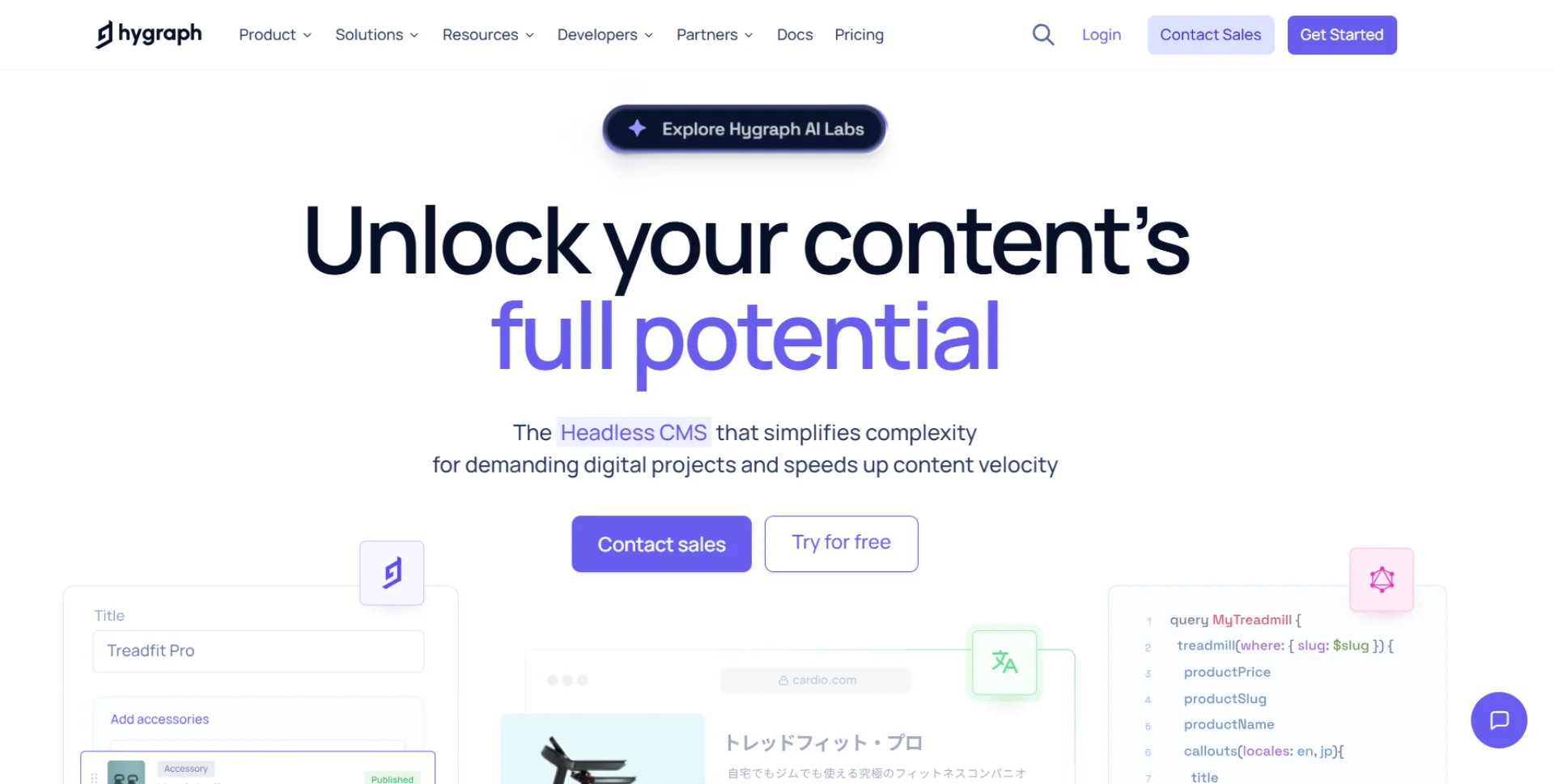
The platform offers a flexible localization API that allows you to add your preferred locales and manage multilingual content. The localized assets can be managed through their UI or via GraphQL mutations.
18. Magnolia 🔗
Claiming to be the most flexible headless CMS, Magnolia is simpler to manage for users with no technical background. You will still have to learn how certain features work but nothing too complicated. In contrast to the majority of CMS, it lacks an admin dashboard, which might make it confusing at first.
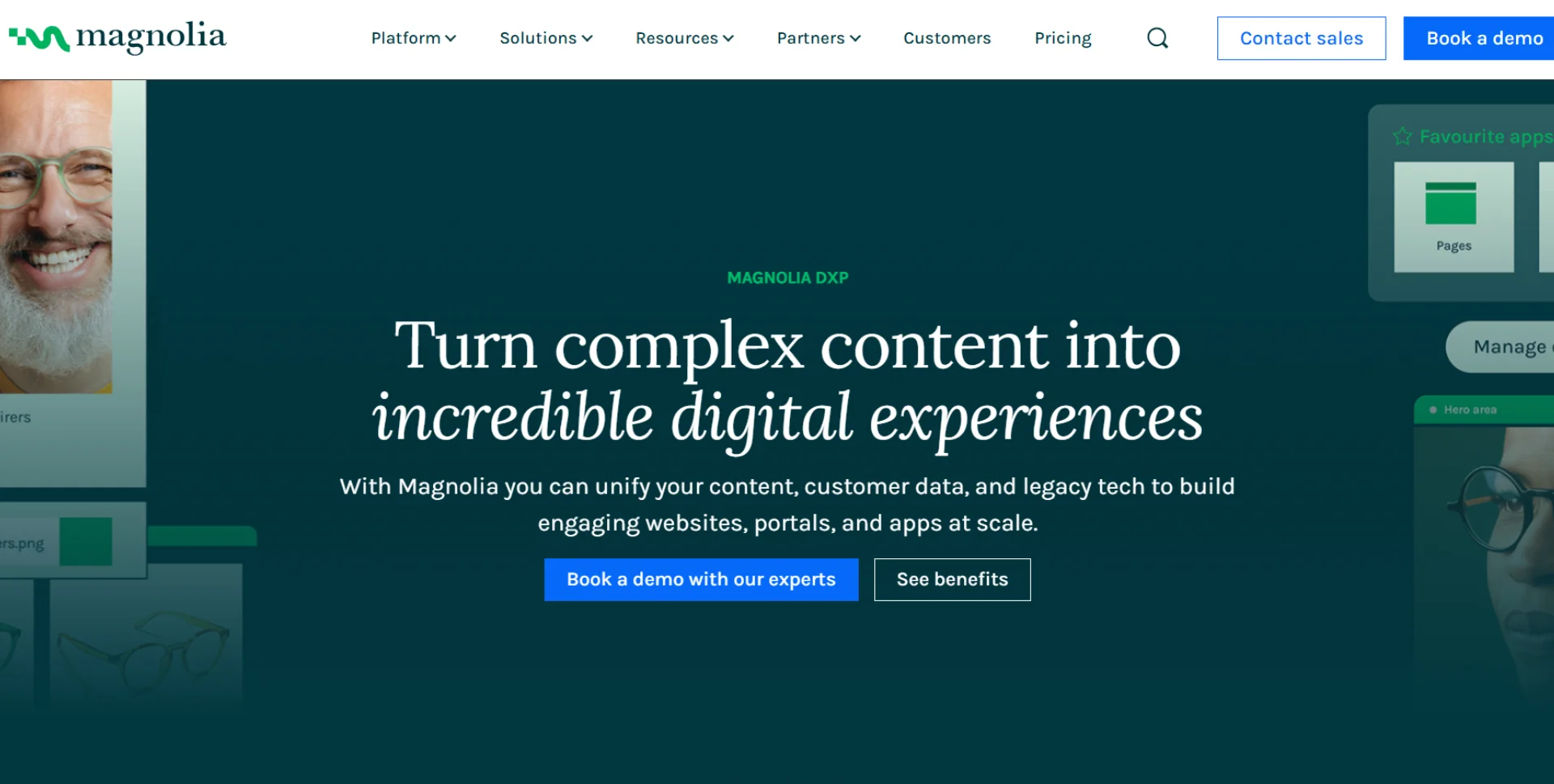
Magnolia relies on Java, but it connects and functions with XML, SOAP, REST, and API as well. It provides insights useful for performing better business decisions and supports a multilingual structure. Users can choose to organize their content in a single tree, multiple trees, or a combination of both.
🚩 How to manage multilingual content with Localazy 🔗
If your CMS supports multilingual content management, you can start using Localazy to manage your translations fairly quickly.
If you want to jump right in, you can start by signing up and reading the Getting started with Localazy article in the documentation.
Connect your website with Localazy 🔗
This is the first step. To connect your website with Localazy, you have three options:
- ⏩ The quick & easy way: If your CMS allows it, extract your content and upload your files manually, translate it, and download it back. This is ideal for one-off translation jobs, but it is okay to get your feet wet and learn the ropes of Localazy before you spend time with a tighter integration.
- 💡 The smarter way: You can automate data transfers and use one of over 50+ integrations to accommodate your project in a few steps with our Command-Line Interface - CLI.
- ✔️ The recommended way: You can also use the Localazy API to exchange data between Localazy and your site. This is probably the best way to connect Localazy and your CMS, which will allow you to automate all aspects of localization.
If you are not sure what type of workflow you should use, contact us, and we will happily help you come up with suitable solutions. 😉
Translate your content 🔗
Once your content is imported to Localazy, you can localize it however you want:
- ⌨️ Translate your content yourself, or invite your translators to do it for you. You can invite volunteers or translators you have worked with in the past, and they will feel right at home. Our translation interface has everything you need to get started. Plus, there is no contributor limit, so don't worry about pricing per seat.
- 🤝 Order translations from our professional translators. You can fully automate the localization process and order services from our Continuous Localization Team. Our vetted translators will translate and/or proofread your content, and whenever you add any new texts, we will proactively deliver the translations as long as the service is active and you have enough credits. We can handle the localization management for you entirely.
- 🤖 Translate everything in a click with the machine translation or AI engine of your choice if you want to see quick results. One-click machine translations can be applied to your whole content from the Professional tier on. We offer four popular and powerful translation engines (Amazon Translate, Google Translate, DeepL, and Azure). OpenAI is also available to integrate with your own API key. Pick a language and apply the suggestions to all of your content immediately. This approach is excellent if you want to see how your site will look in a new language, for content that will be later post-edited, or for less important information that just needs a quick translation.

✔️ Final thoughts 🔗
It's worth your time to check if these CMS are a good choice for your project. Each of the options discussed offers unique strengths and advantages, with all of them offering diverse options for multilingual support.
The best approach to choosing an option is to work with a developer who has experience with your chosen CMS to see if they can meet your needs. For a hassle-free localization experience, we recommend using tools that are integrated with Localazy, including Storyblok, Strapi, Directus, Webflow, and WordPress. With Localazy's expertise and integrations, you can trust that your multilingual website will be in good hands.
